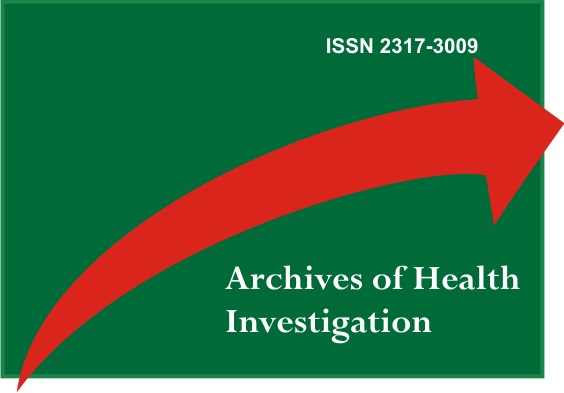Reclaiming the Individual's Identity through Rehabilitation with Oculopalpebral Prosthesis: a Case Report
DOI:
https://doi.org/10.21270/archi.v11i5.5420Keywords:
Maxillofacial Prosthesis, Quality of Life, RehabilitationAbstract
Oral and maxillofacial prosthetics is the specialty responsible for the rehabilitative treatment of facial deformities of various etiologies. Ocular prostheses aim to rehabilitate anophthalmic cavities resulting from the partial or total loss of the eyeball and its adjacent tissues. Patients with oral maxillofacial deformities are at greater risk of developing depressive symptoms, requiring follow-up by a multidisciplinary team. This article aims to report a clinical case in which rehabilitation with oculopalpebral prosthesis was performed in a patient diagnosed with adenoid-cystic carcinoma in the left eyeball. The 59-year-old male patient sought care at the buccomaxillofacial rehabilitation service of the Federal University of Paraíba, where the need for planning and making an oculopalpebral prosthesis was noted. In the protocol of care was performed anamnesis, molding, keroplasty, iris painting, acrylization and characterization of the sclera, finishing and polishing, silicone handling with addition of intrinsic pigmentation and testing of the prosthesis. Afterwards, the final adjustments and extrinsic characterization were made according to the patient's skin peculiarities. Immediately after the installation of the prosthesis, the patient was thrilled to identify himself through the mirror. Thus, we conclude that rehabilitation with maxillofacial prosthesis is responsible for rescuing the identity, self-esteem, self-image, well-being and quality of life of patients with facial deformities.
Downloads
References
Garbino JA, Stump P. Conceitos de Deficiência e Deformidade, Incapacidade e "Invalidez”. In: Opromolla DVA, Baccarelli R. Prevenção de incapacidades e reabilitação em hanseníase. Bauru, Instituto Lauro de Souza Lima, 2003. p.12.
De Carvalho GD, De Souza LF, Ferreira TO, Bento G, Haddad MF. Prótese bucomaxilofacial: a Odontologia além da boca. Arch Health Invest. 2019;8(6):322-28.
Da Silva BS, De Mattos TCB, Shiota EKM, Dias ST, Leal CMB, Nichthauser B. Reabilitação facial por meio de prótese oculopalpebral. Arch Health Invest. 2020; 9(6):563-69.
Brandão TB, Filho AJV, Batista VES, Ribeiro ACP, Nary Filho H, Chilvarquer I et al. Assessment of treatment outcomes for facial prostheses in patients with craniofacial defects: A pilot retrospective study. J Prosthet Dent. 2017;118(2):235-41.
Rodrigues GS, Rodrigues S, Oliveira CD. Reabilitação com prótese bucomaxilofacial: revisão de literatura. Rev Saúde Multidisciplinar. 2019;5(1):20-7.
Lima CCM. Impacto da reabilitação bucomaxilofacial sobre o estado nutricional, sintomas depressivos, autoimagem, autoestima e qualidade de vida em adultos e idosos [tese]. Porto Alegre: Pontifícia Universidade Católica do Rio Grande do Sul; 2014.
Aguiar L, Mozzini AR, Lersch E, De Conto F. Obturador palatino: confecção de uma prótese não convencional – relato de caso. Rev RFO UPF. 2013;18(1):125-29.


